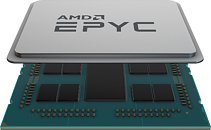Lushfoil Photography Sim Out Now on PC, PlayStation 5 & Xbox Series X|S
It's the end of a long road, I'm exhausted. It's intimidating to finally put Lushfoil out there, but I'm also overwhelmingly excited to see what people can create with it. I hope the game falls into the right hands, and that those people with a sense of experimentation and creativity can surprise us all with what they've taken. I've put a lot of love and intention into the environments created in this game, and now it feels like time to pass it on. I can't wait to see the photos you take!
I'm thrilled to introduce Lushfoil Photography Sim, a tranquil, open-ended photography exploration experience available today on Xbox Series X|S. While real-life photography can be accessible, it can be harder to commit the time and money to travel. Inspired by some real-world locations that had a huge impact on me, I wanted to virtually recreate some of the highlights of my travels so others can experience them too. I committed to learning Unreal Engine over the last few years in order to do each location justice, and make the game I've always wanted to make.
I'm thrilled to introduce Lushfoil Photography Sim, a tranquil, open-ended photography exploration experience available today on Xbox Series X|S. While real-life photography can be accessible, it can be harder to commit the time and money to travel. Inspired by some real-world locations that had a huge impact on me, I wanted to virtually recreate some of the highlights of my travels so others can experience them too. I committed to learning Unreal Engine over the last few years in order to do each location justice, and make the game I've always wanted to make.



















































